Two-Sided Adaptor
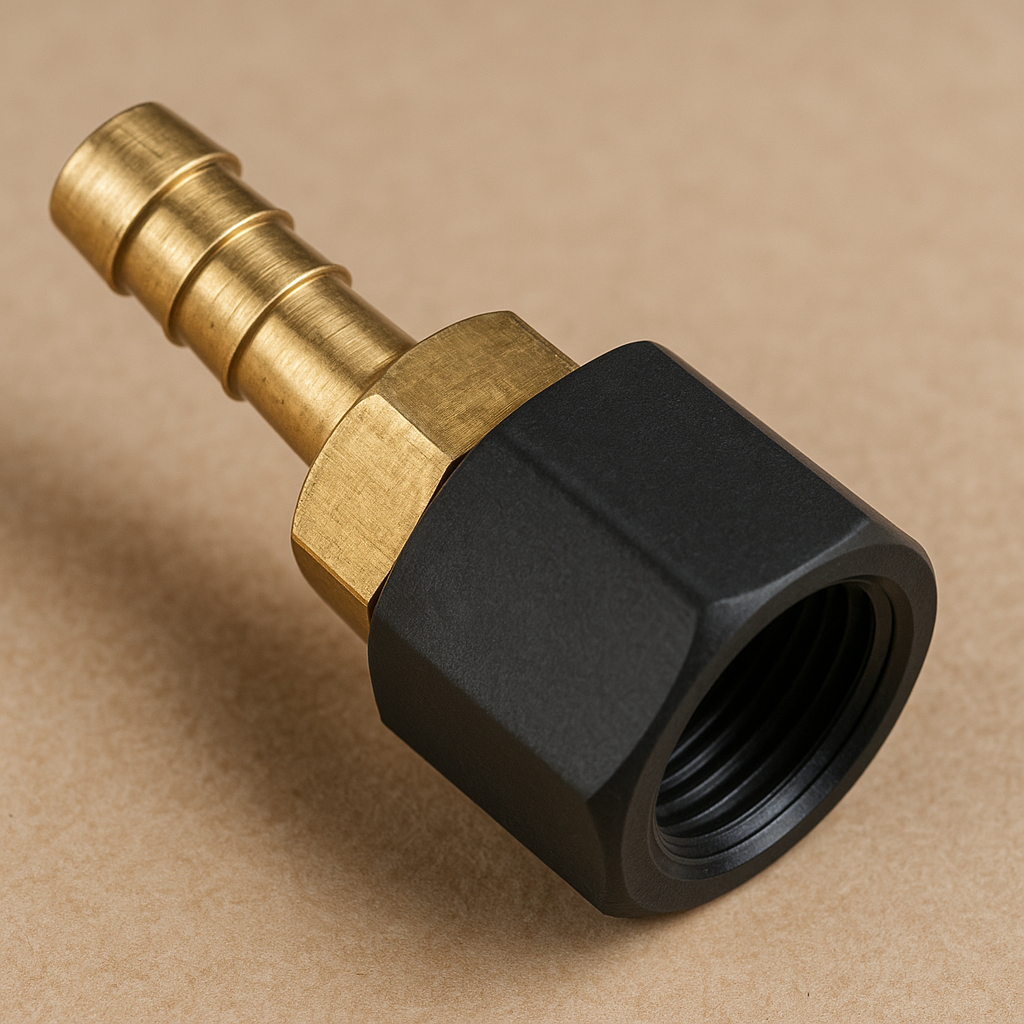
Invented by Schavey; Scott R., Lowe; Dustin, Cooper-Standard Automotive Inc.
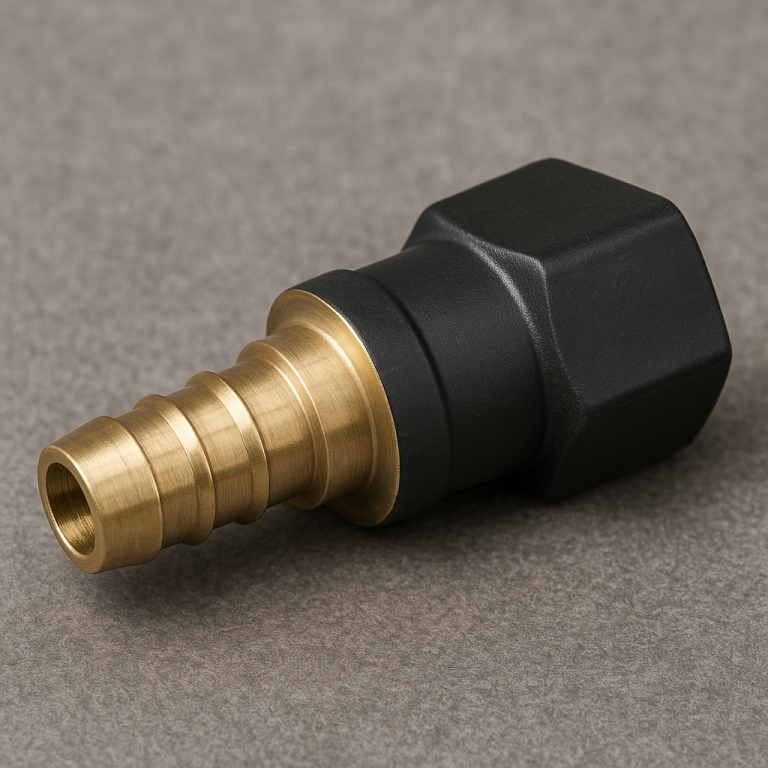
The world of vehicles and machines is full of tubes carrying fluids. But when it comes to connecting different types of tubing—like metal to plastic—the job isn’t always easy. Today, let’s look closely at a new patent application for an adaptor that solves this problem in a smart way. This article will help you understand why this invention matters, how it fits into the bigger picture, and what makes it truly special.
Background and Market Context
Every car, truck, or big machine needs to move fluids, like coolant or oil, from one place to another. For a long time, metal tubes have been the go-to choice, especially in vehicles. Metal is strong and can handle hot or harsh conditions under the hood. But metal tubes have their downsides—they can be hard to shape or fix, they rust, and swapping out parts can be tough.
On the other hand, plastic tubing is getting more popular. It’s cheaper, lighter, and easier to make in different shapes. When a car gets old or needs repairs, it’s common to replace a rusty metal tube with a plastic one. But a new problem comes up: how do you connect a stiff metal tube to a softer plastic one so that fluid doesn’t leak out?
This is not a small problem. Cars are made all over the world, often with different parts, and repairs need to be quick and reliable. The auto repair industry, parts suppliers, and even car makers themselves need a way to join different tubes easily—without fancy tools or special training.
Right now, many people use simple clamps, tape, or one-size-fits-all connectors. These solutions can be clumsy, may not work with all tube sizes, and often end up leaking after a while. That’s why there is a real demand for a better adaptor that can join metal and plastic tubes securely, without leaks or fuss.
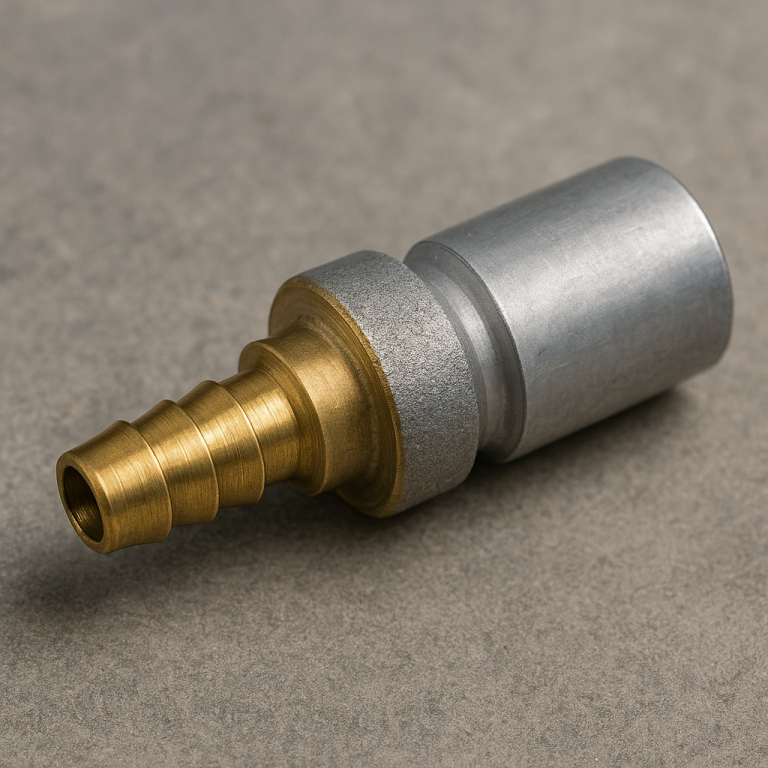
The new adaptor in this patent was made to fill this gap. It was designed for cars and trucks, but it could also help in other machines where fluids need to move through different types of tubes. The market is huge: think of every car, every repair shop, every factory with machines. A tough, easy-to-use adaptor that can bridge metal and plastic tubing could save time and money everywhere.
Scientific Rationale and Prior Art
To understand why this new adaptor is important, let’s talk about how tubing connections usually work. When two tubes are the same material—like both metal or both plastic—there are plenty of connectors available. Metal tubes often use flared fittings, compression nuts, or threads. Plastic tubes might use push-fit connectors or barbed fittings. Each system is meant for its own material.
But when you want to connect a metal tube to a plastic tube, things get tricky. Metal is rigid and doesn’t give much. Plastic can bend and is more likely to stretch or squish. If you try to force a metal fitting into a plastic tube, it might crack. If you clamp a plastic connector onto a metal tube, it might slip off. The connection often needs to be both tight (so it doesn’t leak) and flexible (so it doesn’t break).
Over the years, inventors have tried to solve this. There are adaptors made from just one material—either all metal or all plastic. Some connectors have metal parts with a rubber seal. Others use glue or sealants. But these solutions have their own problems: they can be hard to install, not strong enough, or they might not last if the car gets very hot or cold.
In the past, two-shot molding (making a part from two different materials) has been used for things like toothbrush handles and power tool grips. It lets you put a soft grip on a hard handle. But for tubing adaptors, this idea hasn’t been used much. The main reason is that the bond between the two materials has to be very strong. If the soft part peels off or the hard part slips out, you could get a leak.
Some adaptors try to use a “barb”—a ring or ridge that grabs onto the inside of a tube. Barbs work well with soft, stretchy tubes, but not so well with hard tubes. And if you only use barbs, you might still need a hose clamp to keep everything tight.
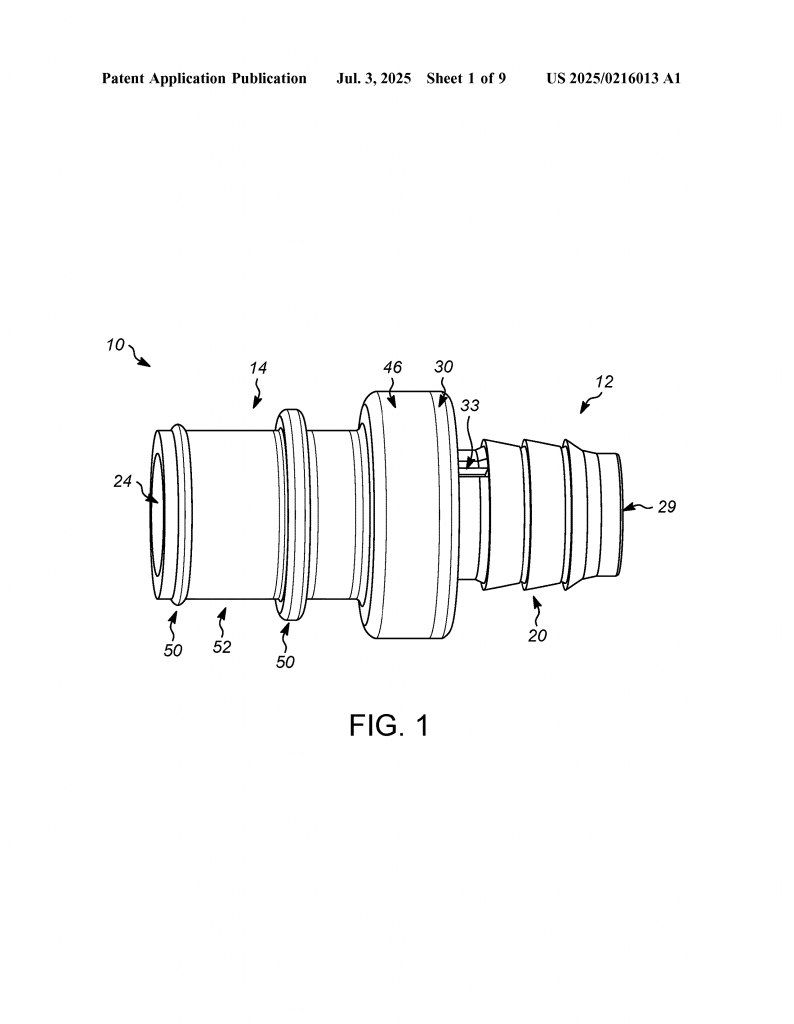
This patent builds on these ideas but makes them better. It uses two different materials: a tough, stiff one for one end (to grab the plastic tube) and a softer, flexible one for the other end (to grip the metal). The two are locked together in a way that keeps them from pulling apart. This approach takes the best parts of old designs but fixes their weak spots.
What’s new here is not just the choice of materials, but also how the two parts are joined. The patent describes special shapes, like flanges and holes, that let the soft and hard materials lock together like puzzle pieces. This means the adaptor won’t come apart, even if fluids are rushing through at high pressure or the tubes are pulled or twisted.
In short, the old ways of joining tubes were either too simple (and risked leaks) or too complicated (and hard to use). This new adaptor uses smart engineering and better materials to make a connector that’s strong, flexible, and easy to use.
Invention Description and Key Innovations
Let’s look closely at how this new adaptor is built and what makes it stand out from anything else.
The adaptor has two main ends. The first end is made from a hard, rigid plastic—something like glass-filled nylon. This end has rings called barbs. These barbs grab onto the inside of a plastic tube and keep it from sliding off. The hard plastic makes the barbs strong, so they don’t bend or break. When you push this end into a plastic tube, it stays tight and doesn’t leak.
The second end is made from a softer, more flexible rubber-like material. This end is shaped to fit over the outside of a metal tube or a fitting. The soft material lets it stretch a little, so it grabs the metal tightly. There’s even a place for a hose clamp—if you want to make the connection even tighter, you can wrap a clamp around this end.
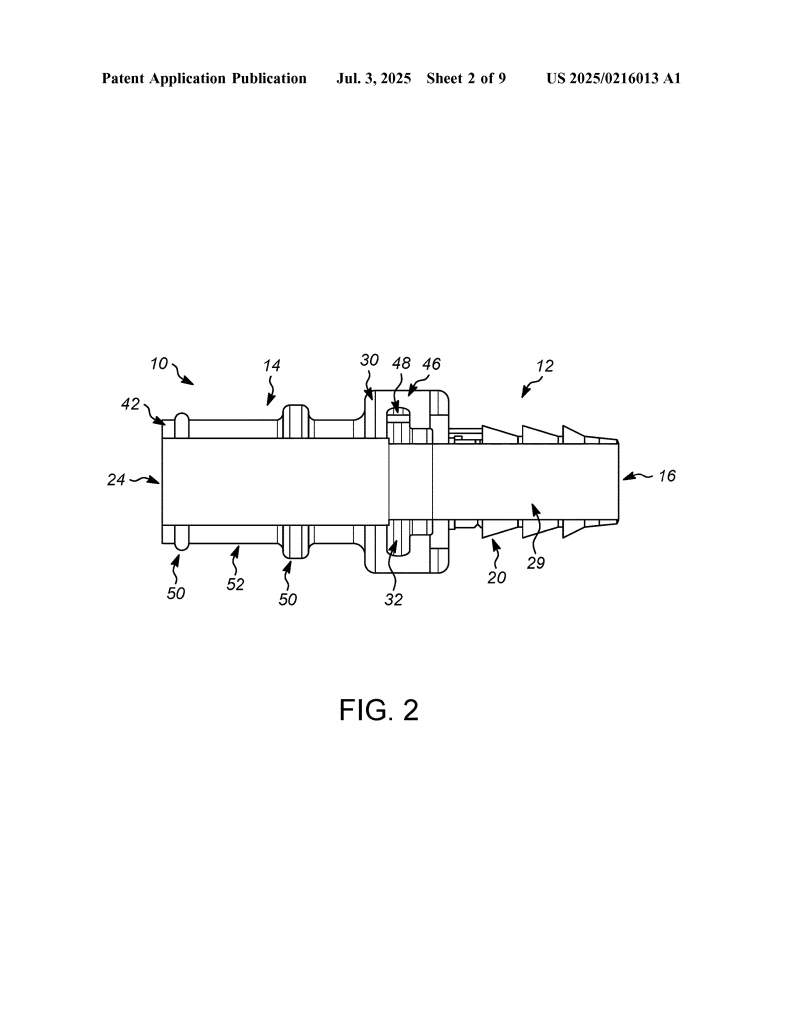
The real secret is how the two ends are joined. The hard plastic end has a special part called a flange, with holes in it. When the adaptor is made, the soft material is molded around the flange and flows into the holes. This forms a strong mechanical lock—it’s not just glue holding the two parts together, but a real “grab” where the soft material fills the holes and can’t pull out. Even if you pull as hard as you can, the two ends stay joined.
This design is made using a process called two-shot molding, or overmolding. First, the hard end is molded. Then, without letting it cool all the way (or after letting it cool, depending on the method), it is put into another mold. The soft material is then molded around the first part, locking it in place. Sometimes, to make the bond even better, the hard part is treated with a primer or plasma, making the surface sticky so the soft material sticks even more.
The choice of materials is important, too. The hard end can be made from several strong plastics—like nylon 6,6, polyesters, or polyolefins. Sometimes, glass fibers are added to make it even stiffer. The soft end can be made from thermoplastic elastomers (like Santoprene), or rubbery materials (like EPDM or SBR). These materials are tough, can handle heat and cold, and don’t break down when exposed to engine fluids.
The adaptor also has some clever details. For example, there are ribs that keep the hose clamp from sliding out of place. There’s even a small rib behind the last barb that keeps the tube from twisting. The inside shape is designed so that fluid flows smoothly through, without causing turbulence or slowing down.
Using this adaptor is easy. First, you push the barbed end into the plastic tube. It grabs on tightly. Next, you slip the soft end over the metal tube or fitting. If needed, you add a hose clamp to make it extra tight. That’s it—the tubes are now joined, and fluid can flow from one to the other without leaks.
Making the adaptor is also simple and cost-effective. Since it’s all done with injection molding, you can make thousands of these adaptors quickly and cheaply. The design also allows for different sizes, so you can make adaptors for many different tube diameters.
This invention is very versatile. It can be used in car repairs, but also in other machines that need to move liquids—like tractors, construction equipment, or even some home systems. By solving the problem of joining two different types of tubes with dissimilar materials, this adaptor opens up new options for repairs and new designs for machines.
Key Benefits of the Invention
First, the adaptor is strong and reliable. The mechanical lock between the hard and soft materials means it won’t come apart in use. Second, it’s flexible—the soft end can grip many types of fittings, even if they’re slightly different shapes or sizes. Third, it’s easy to use—no special tools or training needed. And finally, it’s cost-effective. Using two-shot molding means the adaptors can be made quickly and at a low price, making them attractive for both car makers and repair shops.
The patent also covers different ways of making the adaptor, including options where the hard part is still hot when the soft part is molded, or where special surface treatments are used to make the bond even better. The design allows for different numbers and shapes of barbs and holes, so it can be adjusted for different needs. This flexibility means the adaptor can be tailored for many different uses.
Conclusion
Connecting metal and plastic tubes has always been a tricky job in cars and machines. Old solutions were either too simple and leaky, or too hard to use. This new adaptor changes the game. By using two different materials, joined with a strong lock, it gives the best of both worlds: a tight, leak-free connection that’s easy to use and affordable to make.
This invention stands out because it looks at the real needs of car makers and repair shops. It uses proven materials and smart engineering to solve a problem that’s been around for decades. And because it’s easy to make and use, it could soon be a common part in cars, trucks, and machines everywhere.
If you work in the auto repair business, supply parts, or design machinery, keep an eye on this kind of adaptor. It’s a simple idea, but one that could save time, money, and trouble for years to come.
Click here https://ppubs.uspto.gov/pubwebapp/ and search 20250216013.


